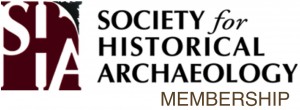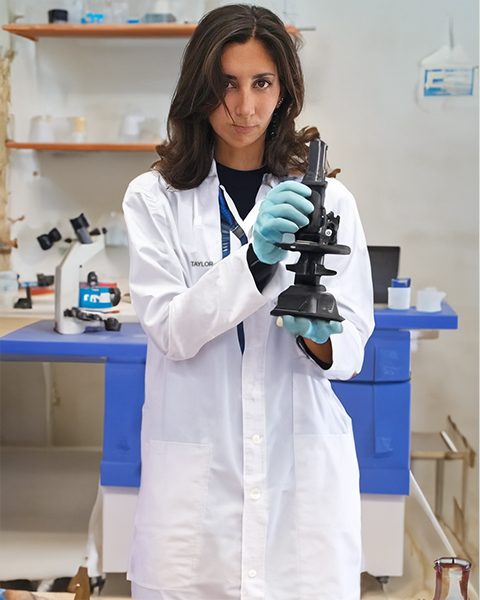 Here’s the latest in our series of entertaining interviews with a diverse array of your fellow SHA members. Meet a member for the first time or learn something about a colleague that you never knew before. This blog series also offers current members an opportunity to share their thoughts on why SHA membership is important (Camaraderie? Professional service? Exchange of ideas in conference rooms and beyond? You tell us!). If you would like to be an interviewee, please email the Membership Committee Social Media Liaisons Eleanor Breen (eabreen@mountvernon.org) or Kim Pyszka (kmpyszka@aum.edu).
Here’s the latest in our series of entertaining interviews with a diverse array of your fellow SHA members. Meet a member for the first time or learn something about a colleague that you never knew before. This blog series also offers current members an opportunity to share their thoughts on why SHA membership is important (Camaraderie? Professional service? Exchange of ideas in conference rooms and beyond? You tell us!). If you would like to be an interviewee, please email the Membership Committee Social Media Liaisons Eleanor Breen (eabreen@mountvernon.org) or Kim Pyszka (kmpyszka@aum.edu).
Kathryn Taylor (taylorkathryn281@gmail.com) is a research associate at the Department of Anthropology of Rice University in Houston and a rising star within the Society for Historical Archaeology.
What is the most interesting artifact you've ever found?
The most interesting artifact I've ever found was during an excavation in southern Peru. We were digging at a site that was believed to have been a religious center during the Inca Empire. I was sifting through the dirt when I came across a small, intricately carved stone figurine. It was in the shape of a jaguar and was incredibly detailed, with etchings that represented the animal's fur and facial features. The figurine was believed to have been used in religious ceremonies and was likely buried as an offering to the gods. It was amazing to hold something that had been created by people hundreds of years ago and to think about the cultural significance it held.
Fieldwork or Labwork?
I would choose fieldwork over labwork. Although I value the analytical skills that are honed in the lab, I find the excitement of being in the field to be a more enjoyable experience overall. The opportunity to explore new sites, uncover artifacts, and work with other archaeologists and team members in real-time is what draws me to fieldwork. I enjoy the physical and mental challenges of the field, such as dealing with difficult terrain and strategizing excavation plans. Additionally, fieldwork provides an opportunity to travel to new and exciting locations, which is a big draw for me as I love to explore new cultures and historical sites. While lab work may be more organized and detail-oriented, I find that the rewards of fieldwork, such as discovering new information and the sense of accomplishment from uncovering artifacts, are much more satisfying.
What would be your dream site to work at?
My dream site to work at would be the Dampier Archipelago in Western Australia. The area is known for its rich Aboriginal history and is home to a diverse range of archaeological sites, including rock shelters, open-air campsites, and shell middens. The region was also the site of early European exploration and settlement, which adds another layer of complexity and interest to the archaeology of the area.
One of the reasons why I would love to work in the Dampier Archipelago is because of the opportunity to work with and learn from the Traditional Owners of the land. Collaborating with Indigenous communities is a critical part of archaeological research, and I believe that working in the Dampier Archipelago would provide an excellent opportunity to build relationships and engage in meaningful dialogue with local Aboriginal people.
In addition to the cultural significance of the area, the Dampier Archipelago is also home to a unique and diverse ecosystem. Working in this environment would provide opportunities to learn about the interplay between human societies and the natural world and how they have impacted each other over time. Overall, I believe that the Dampier Archipelago would be an ideal site for an archaeologist with a passion for history, culture, and the environment.
What are you currently reading?
I'm currently reading Dark Emu by Bruce Pascoe. The book challenges the conventional wisdom about Indigenous Australians as simply hunter-gatherers and argues that they had complex agricultural systems and sophisticated societal structures. The book has been a fascinating and eye-opening read for me, and has given me a deeper appreciation for the Indigenous people of Australia and their rich cultural heritage. As an archaeologist, I am always interested in learning more about the people and cultures that have come before us, and "Dark Emu" has been a great resource in expanding my knowledge in this area. I highly recommend it to anyone interested in learning more about the Indigenous people of Australia and their history.
What did you want to be when you grew up?
When I was growing up (I was born in Durham, North Carolina by the way), I always had a fascination with the outdoors and nature. I was constantly exploring and learning about the world around me. As a result, I knew from a young age that I wanted to work in a field that would allow me to pursue this passion. Initially, I thought I wanted to be a park ranger or a wildlife biologist. However, as I got older and learned more about history, I became interested in archaeology. I realized that archaeology would allow me to combine my love of the outdoors with my interest in understanding the past and how humans have interacted with the environment over time. So, I pursued a degree in archaeology and have been working in the field ever since. While my focus has shifted slightly over the years, my passion for understanding the natural world and our place in it has remained a driving force in my career.
Why are you a member of SHA?
I became a member of the Society for Historical Archaeology (SHA) early in my academic career, and it has been an incredibly valuable resource for me ever since. As an archaeologist, I believe that it is important to stay up-to-date with the latest research and developments in the field, and the SHA provides an excellent platform for doing so. Membership in the SHA has given me access to a wide range of publications, including the Journal of Historical Archaeology, which is one of the leading academic journals in the field. I have also had the opportunity to attend the SHA's annual conference, which brings together scholars from around the world to share their research and network.
Beyond these benefits, I have found that being a member of the SHA has also helped me to build relationships with other archaeologists and professionals in related fields. This has opened up new opportunities for collaboration and research, and has also helped me to build a sense of community within the field.
How many years have you been a member (approximately)?
I have been a member of the Society for Historical Archaeology for about 6 years now. It's been a great organization to be a part of and has been instrumental in my professional development as an archaeologist.
Which article from Historical Archaeology has been the most influential to you?
One article from Historical Archaeology that has been particularly influential to me is "Reconstructing the Landscape of Slavery: Mulberry Row at Thomas Jefferson's Monticello" by Gardiner Hallock and Lucia Stanton. This article focuses on the excavations of Mulberry Row, a site at Monticello where enslaved individuals lived and worked. The authors' use of archaeology to reconstruct the lives of enslaved individuals and their contributions to Monticello's landscape was eye-opening to me.
As an archaeologist, I believe it is important to use the material culture we uncover to tell the stories of those who may have been marginalized or forgotten in history. The work of Hallock and Stanton inspired me to approach my own research with a similar mindset, seeking to uncover and amplify the voices of those whose stories may have been overlooked. Overall, this article was not only informative but also transformative in the way I approach my work as an archaeologist.
Which benefit of belonging to SHA do you find the most beneficial?
I find the opportunity to connect with other professionals in my field to be the most beneficial aspect of belonging to the SHA. I value the ability to collaborate and share ideas with others who share my passion for historical archaeology. The SHA provides a platform for me to meet other professionals at conferences, workshops, and other events, where I can engage in meaningful discussions and gain new insights into my work.
Additionally, being a member of the SHA gives me access to a wealth of resources and information that I can use to further my research and professional development. The organization provides access to a wide range of publications, including academic journals, newsletters, and other materials that keep me up-to-date on the latest research and developments in my field. I also have access to job postings and other career opportunities through the SHA, which has been invaluable in advancing my career as an archaeologist. Overall, I believe that belonging to the SHA has been essential in helping me grow as a professional and achieve my goals in the field of historical archaeology.

